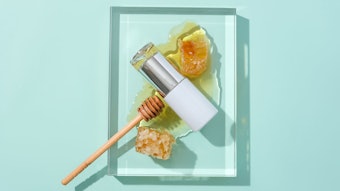Hair scientists must always remember, while potentially biting their tongues, that hair care products are sold to the general public using “consumer language.” Consumers use a number of descriptors and terms to communicate their hair’s properties and needs, and a collection of these expressions has become the lexicon of the beauty industry. However, scientists should take these descriptors with a pinch of salt and carefully consider the true causes of issues, as there is danger in taking these consumer expressions literally. By means of illustration, earlier articles in this series described how the consumer term moisturization has no relationship to the technical water content of hair,1, 2 while strengthening claims are relatively common on products that produce no enhancement of tensile properties.3, 4 Some consumer terms do have logical scientific counterparts. For example, conditioning equates relatively well to surface lubrication,1, 5 albeit in an aesthetically pleasing manner.
Log in to view the full article
Hair scientists must always remember, while potentially biting their tongues, that hair care products are sold to the general public using “consumer language.” Consumers use a number of descriptors and terms to communicate their hair’s properties and needs, and a collection of these expressions has become the lexicon of the beauty industry. However, scientists should take these descriptors with a pinch of salt and carefully consider the true causes of issues, as there is danger in taking these consumer expressions literally. By means of illustration, earlier articles in this series described how the consumer term moisturization has no relationship to the technical water content of hair,1, 2 while strengthening claims are relatively common on products that produce no enhancement of tensile properties.3, 4 Some consumer terms do have logical scientific counterparts. For example, conditioning equates relatively well to surface lubrication,1, 5 albeit in an aesthetically pleasing manner.
However, others are distinctly more nebulous. One such imprecise term is the consumer word frizz. This article begins by crafting a reasonable definition for this consumer term and subsequently describes methodologies that may be used to demonstrate positive benefits associated with the product forms in mitigating this occurrence.
Defining Frizz
The definition of frizz is not straightforward, so it is perhaps easier to define what frizz is not. Namely, highly aligned, bone-straight hair is clearly devoid of any frizziness. In this orderly state, hair appears sleek and smooth, is shiny, and possesses a fluid flowing motion; yet all these desirable attributes arise from the same underlying property—a very high degree of fiber alignment. Therefore, it seems reasonable to suggest that complaints relating to frizz involve an inability to reach this sought-after condition, or some partial loss of this state after an initial degree of success.
In testing this definition, it is necessary to contemplate various reasons for fiber misalignment. Most obvious is the natural shape of the hair, where kinky African hair possesses no alignment and is frequently described as frizzy. With this said, curly hair is not inherently frizzy, with well-defined curls consisting of highly-aligned fiber arrangements. Brushing or combing hair in a low-humidity environment will lead to the generation of static flyaway—another condition commonly termed frizz. Meanwhile, at the other end of the spectrum, high-humidity conditions can quickly destroy temporary alignment attained through heat styling, and the result is again generally termed frizz. It is suggested that hair’s condition/health can also be a contributor, in that broken fibers fray and produce split ends that often protrude due to length differences relative to their neighbors. In higher numbers these shorter, deformed fibers may also constitute a frizzy appearance. As such, this proposed definition appears to hold up to scrutiny.
Conditioners to the Rescue
Traditional hair conditioner products are able to help with most frizz issues. A previous article described how the use of such products produces a dramatic reduction in hair breakage during the grooming process. This occurs because surface lubrication lowers snagging and tangling during brushing or combing, which then reduces the fatiguing forces experienced by individual hair fibers. In practice, this occurrence is convincingly demonstrated by performing repeated grooming experiments where, as the name suggests, hair tresses are continuously combed or brushed with periodic counting of broken fibers. Through this approach, it is not uncommon for the use of conventional, rinse-off conditioners to lower hair breakage by 70% to 80%, while leave-in treatments may produce greater benefits.
Low-Humidity Frizz Issues
Conditioner products are also extremely effective at lowering static electricity build-up during grooming. The underlying cause of this problem involves the migration of electrons from one body to another when objects are rubbed together. The nature of this electron flow is dependent on the relative positioning of materials in the triboelectric series, and during grooming, electrons will travel from hair to comb/brush with the subsequent development of a positive charge on individual fibers. Thus, unruly static flyaway occurs due to electrostatic repulsion between strands with the same surface charge. The lifetime of this surface charge is dependent on the ease by which it can be conducted away, which strongly depends on the moisture content of the hair. Therefore, charge dissipation is poorest under low-humidity conditions, where hair contains lesser water content,2 and static flyaway problems are much more likely to occur.
The groundwork for measuring static build-up in hair was given in a seminal paper by Lunn and Evans6 in 1977, and Figure 1 shows the author’s design for a modern automated approach for quantifying this property. Hair tresses are brushed in a highly reproducible manner with a rotating motorized arm while a specifically positioned sensor measures the resulting charge build-up. The apparatus is small enough to be housed inside a benchtop humidity chamber to ensure controlled and constant atmospheric conditions. Figure 2 shows a set of typical results for hair treated with commercially available 2-in-1 shampoo and conditioner products, relative to an unconditioned control. Both product forms demonstrate a positive effect in slowing this occurrence, with the conditioner performance being especially noteworthy.
With this said, there is some dispute in the scientific literature as to the mechanism by which products produce this benefit. Lunn and Evans6 suggested that surface lubrication leads to less charge build-up, while Jachowicz et al.7 believed that cationic surfactant deposition increases surface conductivity and thus facilitates charge dissipation. A further supposition is that the presence of these surface deposits changes the position of hair in the triboelectric series and thus influences the extent of charge build-up in a different manner. None of these explanations is mutually exclusive, and it is entirely possible that efficacy involves some contribution of all three factors.
High-Humidity Frizz Issues
The shape of hair can be temporarily altered by allowing it to dry in a specific conformation, and this occurrence is commonly termed a water-set. The process relates to the internal structure of hair being provided by two different types of chemical bonds. Permanent structure is attained through covalent cystine disulfide bonds within the keratin protein, while hydrogen bonding between oppositely charged amino acid groups produces additional secondary structuring in the dry state. However, these electrostatic interactions are disrupted by the solvating power of water, and consequently, wet hair is less structured and more pliable.
In essence, heat styling devices drive water from the hair, inducing additional internal structuring which can be sufficient to anchor hair in a new temporary conformation. The water content of hair will progressively re-equilibrate to a level commensurate with the relative humidity of the surrounding environment2 and consequently, the style will relax and gradually revert to its natural conformation. The rate and extent of style loss will be proportionate to the climatic conditions. For example, hot, humid summer days lead to especially rapid style deterioration. As a result, consumers with wavy or curly hair, who use this approach to create sleek, straight styles, will complain about “frizz” as this reversion process occurs.
“Anti-frizz” products have become prevalent on hair care shelves in recent years. These are often traditional leave-in conditioner products, although a somewhat newer product form involves serums that consist of various oils. It is often presumed that hydrophobic deposits from such products give rise to an occlusive surface layer that inhibits moisture adsorption. However, this appears unlikely, as water is a small molecule whose pathway is difficult to deter. Nonetheless, consumer acceptance of such products suggests some manner of technical efficacy.
The effectiveness of these products can be demonstrated in the laboratory. Anti-frizz experiments typically involve the use of high-quality digital photography in combination with image analysis approaches to visualize and quantify the shape of hair tresses. Figure 3 shows Mulatto hair tresses suspended in a benchtop environmental chamber. After capturing images to document this initial state, the hair is straightened using a conventional, commercially available heat-styling device; needless to say, this critical step must be performed in a highly controlled and reproducible manner. Additional photographs are then taken to characterize the straightened state of the tress, and the relative humidity is raised to some elevated level with further image collection to document the reversion process with time. Figure 4 illustrates this progressive frizzing of the hair.
Results do show the ability for certain hair treatments to slow down this reversion rate to varying degrees. Clearly, products containing styling fixatives tend to yield the most enduring benefit, yet cohesion between fibers or simply the additional weight imparted by surface deposits would also seem to be contributors to this efficacy.
Summary
Frizz is a nebulous consumer term with a number of potential causes. Yet, it is hoped that the definition suggested here provides an underlying commonality behind the different ways in which this expression is commonly used. Namely, it is postulated that frizz involves an inability to achieve a desired state of high hair fiber alignment or some loss of this state after a degree of initial success. Accordingly, this definition encompasses issues associated with high-humidity conditions (water-set reversion), low-humidity conditions (static flyaway) and hair damage (split ends), while also accounting for the innate properties of hair itself. The good news is that conventional, commercially available conditioners are able to help with most of these issues. Surface lubrication lowers grooming forces, which subsequently reduces the incidence of snags and tangles and thus produces a dramatic reduction in fiber breakage. This same lubrication, perhaps in combination with improved surface conductivity and a re-positioning within the triboelectric series, greatly reduces static electricity buildup during brushing or combing of hair with low water content. Moreover, increased weight associated with surface deposits can provide some help in slowing the reversion of straightened hair under high-humidity conditions.
In general, anti-frizz products tend to be heavier conditioners that are often used in a “leave-in” manner, as opposed to being partially rinsed out. These products may be too heavy a coating for consumers with fine hair, but they can be lavishly applied to thicker, curly hair to yield considerable benefits. A second popular product form is a mixture of non-volatile oils that are often contained in a cyclomethicone base. In this case, the volatile silicone can evaporate over time to reduce the extent of surface coating. Oiling of hair is a popular and long-standing practice in a number of cultures, and this process appears to have attained current attention and acceptance as a corollary of the recent trend for sleek styles. Accordingly, a flood of exotic-sounding oils have been introduced to the market, perhaps in response to the remarkable popularity of argan oil. Of course, these products also lubricate the hair and therefore provide similar efficacy in terms of reduced breakage, retarding static electricity build-up and weighing down unruly hair. There is also a popular belief that such treatments afford a degree of protection to the hair during high temperature styling. This hot topic of heat protection will be covered in the next edition of this column.
References
- TA Evans, Consumer vs. scientific language: Relating in vivo to in vitro, Cosm & Toil 128(5) 300-304 (2013)
- TA Evans, Measuring the water content of hair, Cosm & Toil 129(2) 64-69 (2014)
- TA Evans, Measuring Hair Strength, Part 1: Stress-strain curves, Cosm & Toil 128(8) 590-594 (2013)
- TA Evans, Measuring Hair Strength, Part 2: Fiber Breakage Cosm & Toil 128(12) 854-859 (2013)
- TA Evans, Evaluating Hair Conditioning with Instrumental Combing, Cosm & Toil 126(8) 558-563 (2011)
- AC Lunn and RE Evans, The electrostatic properties of human hair, J Cosmet Sci 28 549-569 (1977)
- J Jachowicz, G Wis-Surel and GL Garcia, Relationship between triboelectric charge and surface modifications of human hair, J Cosmet Sci 36 189-212 (1985)










